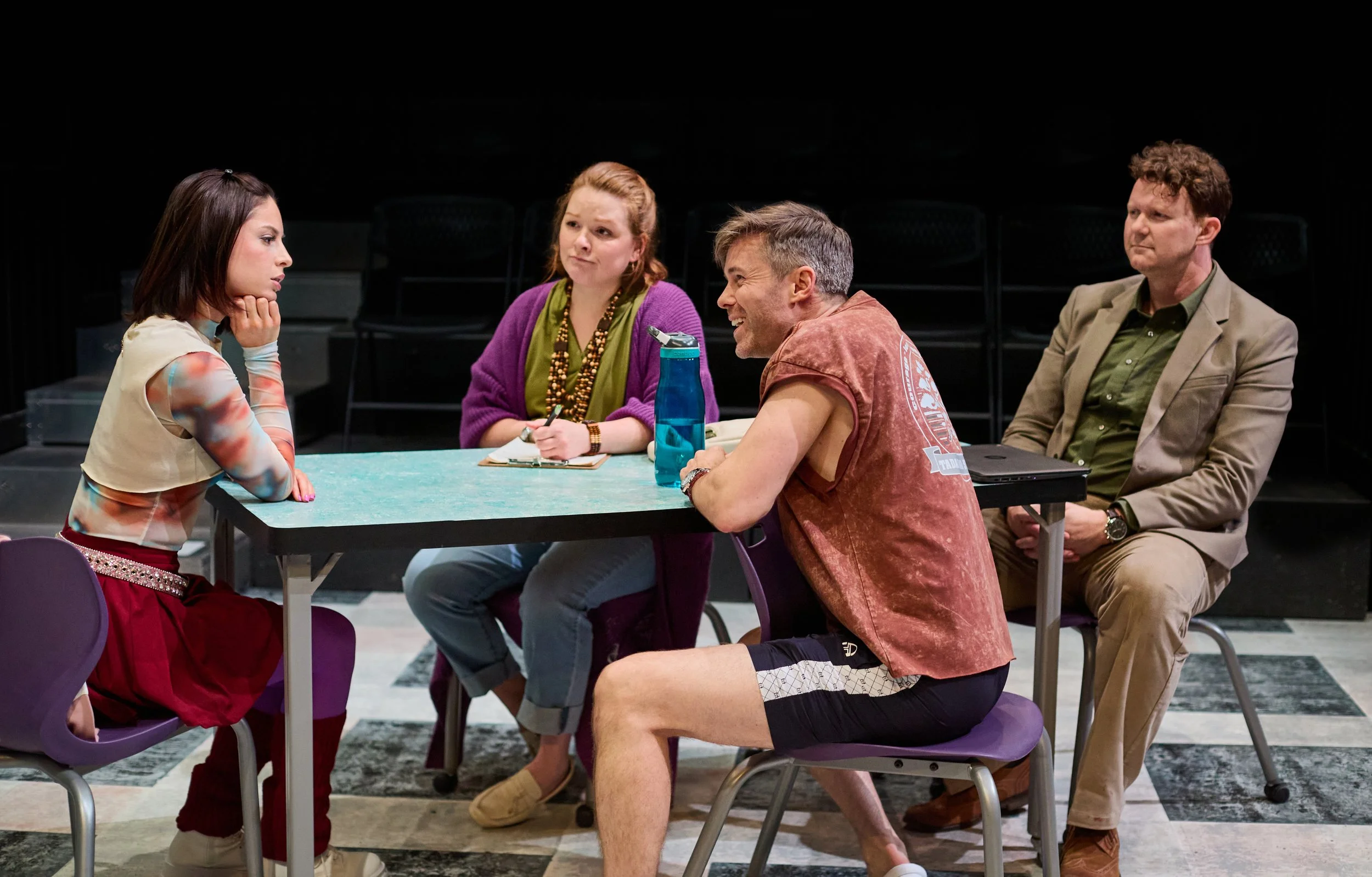Why the Center Section is Overrated
As 4th Wall Theatre’s Marketing Manager, I’ve had countless conversations with patrons about seating preferences. And almost always the refrain is, "Do you have anything available in the center section?" And while I’m happy to accommodate, I can’t help but think: "If I wanted to watch something head-on, I might as well watch TV."
A better title for this post would probably be why the side sections are UNDERRATED because I'm not here to nag anyone about their seating preferences. However, let’s talk about why the center section isn’t necessarily the best place to experience live theatre—especially in a venue like ours, a thrust black box that thrives on intimacy and immersion.
For those unfamiliar, a thrust stage extends into the audience, with seats on three sides, creating an intimate and engaging environment. This differs from a proscenium stage, where the audience faces the action straight on like a picture frame. The beauty of the thrust design lies in its ability to connect performers and audience members dynamically, wrapping them in the world of the play. Yet, many patrons instinctively gravitate toward the middle, perhaps out of habit or the belief that it’s the "best seat in the house."
Four types of stages.
In a thrust configuration, every seat offers something unique. Sitting on the sides can give you a fresh perspective on the action. You might catch subtle nuances—a raised eyebrow, a quiet sigh—that you’d miss from the center. The interplay of perspectives allows you to feel like you’re part of the story rather than just watching it unfold.
Another advantage of sitting off-center? Directors and designers craft moments specifically with the space in mind, using angles and blocking to maximize impact from every side.
For example, during THE THANKSGIVING PLAY last year, I sat in the student desks placed upstage (in this case theatre in the round). One actor hilariously mimicked a turkey dramatically dying from a hunter's shotgun—a moment that felt even funnier knowing only a few of us in the audience could see it from our vantage point.
The Thanksgiving Play | Photo by Gabriella Nissen
Theatre, at its core, has the power to change or expose us to new perspectives—both figuratively and literally. By shifting your physical point of view in the audience, you can gain fresh insights and connect with the story in ways you might not expect.
And let’s not forget about the actors. There’s a certain electricity that comes from watching an actor make eye contact with someone just a few feet away—a reminder that theatre is alive and immediate in a way no other medium can replicate.
So, the next time you’re booking tickets, consider the unique experience that comes with every seat. Each one offers its own point of view, allowing you to connect with the story in a different way. Live theatre thrives on discovery and connection, and stepping outside the "center section" mindset can open up new dimensions of the performance.
At 4th Wall, every seat has equal value, offering a distinct perspective that adds richness to the experience. Theatre invites us to see the world from multiple angles—why not start by shifting your literal point of view in the audience? Trust me, wherever you sit, you’ll be part of something extraordinary.
-Gabe V, marketing manager


